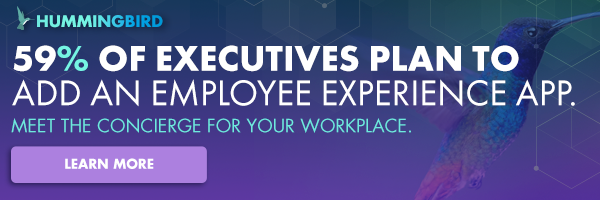Are Food Delivery Apps Good Or Bad For The Workplace?


It’s almost lunchtime—and instead of heading to the cafeteria, employees are turning to food delivery apps to order their favorite take-out.
Meal delivery sales to the four largest apps—DoorDash, Grubhub, Uber Eats and Postmates—have tripled in the past three years, according to the Atlantic.
When you consider everything we do on our smartphones today, this feels like a natural evolution. It’s convenient and gives employees more options. But is there a downside? That depends on who you ask.
How Food Delivery Apps Are Changing The Way We Do Lunch
Long lunch breaks are increasingly being replaced by “food on demand.”
By 2020, more than half of restaurant spending is projected to be “off premise,” according to an analysis by investment group Cowen and Company.
Pizza still dominates the food delivery market, but that’s changing as food delivery apps establish partnerships with a wider range of restaurants.
Other apps like Postmates don’t partner with any restaurants, but promise to pick up anything from anywhere and deliver it to you. And the best food delivery apps will do it in under an hour.
As food delivery apps become more common in the workplace, there are a few things to consider.
First, there are the logistics of receiving dozens of deliveries each day. You’ll either have a large group of employees waiting in the lobby, or a receptionist notifying each employee when their food arrives.
And if you have an employee cafeteria, you could have a lot of food that’s going to waste.
There’s also the potential impact on company culture and employee wellbeing. Employees who have food delivered are more likely to eat at their desks rather than taking a much-needed lunch break, where they can step away from their screens and talk with colleagues.
How To Handle Food Delivery Apps In Your Workplace
Food delivery apps will only continue to grow in popularity, but there are a few things you can do to make them work for your workplace. Here are three updates to consider.
Use Intelligent Lockers
Intelligent lockers are customizable electronic locker systems that keep packages (or food deliveries) secure without requiring every employee to have their own mailbox.
Once the package is secured in the locker, the recipient receives an email alert that provides them with the pickup location and release code. Recipients can then collect deliveries at their convenience.
This eliminates the need for a receptionist to track everyone down.
Implement A ‘No Desk Lunch’ Policy
Our “on demand” food culture is making employees less likely to take breaks. A recent study by napkin-maker Tork found Millennials in particular feel pressure to skip lunch breaks because they’re afraid their coworkers will judge them. Yet 16 percent said they’d willingly take a pay cut in exchange for being able to take a lunch break every day. And the research shows those who do take breaks are more productive and engaged.
Your workplace policies and culture could be inadvertently discouraging employees from taking breaks. Consider implementing a “no desk lunch” policy.
Architecture firm NELSON Worldwide did this as part of an initiative to achieve WELL Certification. Initially, there was pushback, WELL Accredited Professional Amy Leigh Hufford said. But it didn’t take long before people saw positive changes from this policy.
Monitor Utilization Of The Employee Cafeteria
If your workplace has an employee cafeteria, you might see more food going to waste as employees become more accustomed to using food delivery apps.
Fortunately there’s a simple solution—monitor utilization more closely.
In addition to keeping track of purchases, you can also use sensors to monitor foot traffic and identify patterns throughout the week so you can make adjustments accordingly.
Sensors can also help employees gauge wait time. They can use a workplace app to check occupancy, see the lunch menu and even place an order with a food delivery service.
If they see the cafeteria is especially busy on a particular day, they might opt for delivery instead. They can also receive notification when their delivery is ready for pick-up in an intelligent locker.
The Verdict On Food Delivery Apps
Workplace leaders play an important role in shaping the employee experience. Staying on top of the latest trends that impact that experience—including lunch— can help them be more responsive and better serve the workforce.
Food delivery apps should never replace off-site lunches—sometimes we all just need to get away from the office—but they can make it easier for employees to take lunch breaks.
As long as your workplace is prepared to handle the influx of sandwiches orders and take-out containers, these apps can minimize wait times and allow everyone to maximize the time they have together.
Looking for a better way to do lunch? The iOFFICE Hummingbird workplace app can help! See how Hummingbird can help your workplace manage food deliveries, package pickups, cafeteria menus and more.
